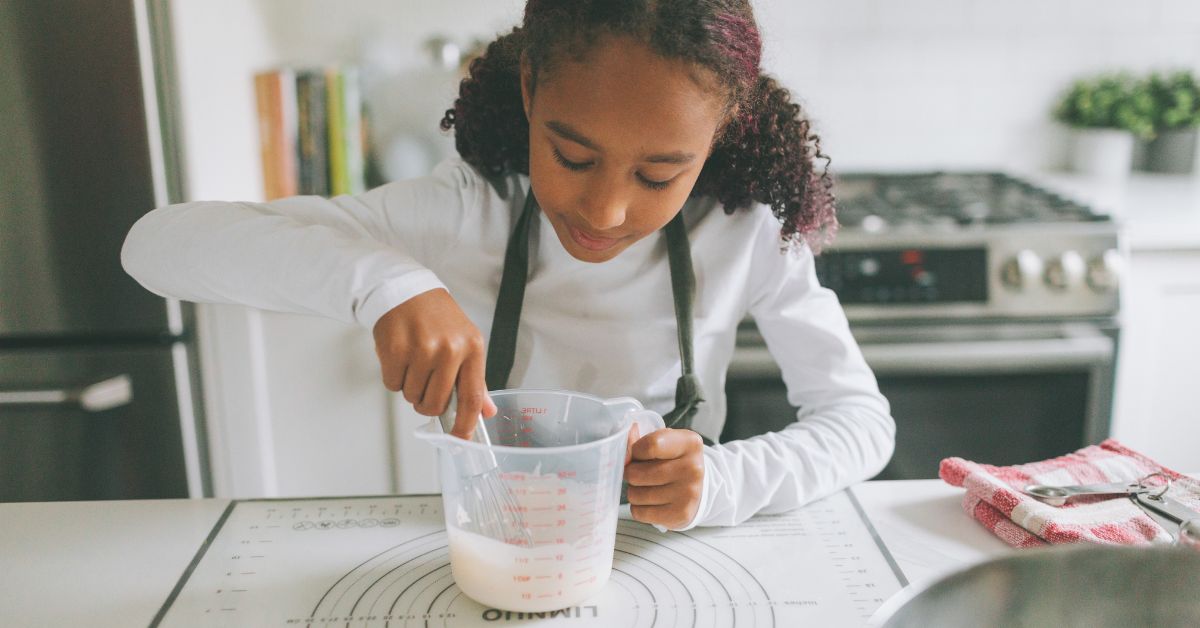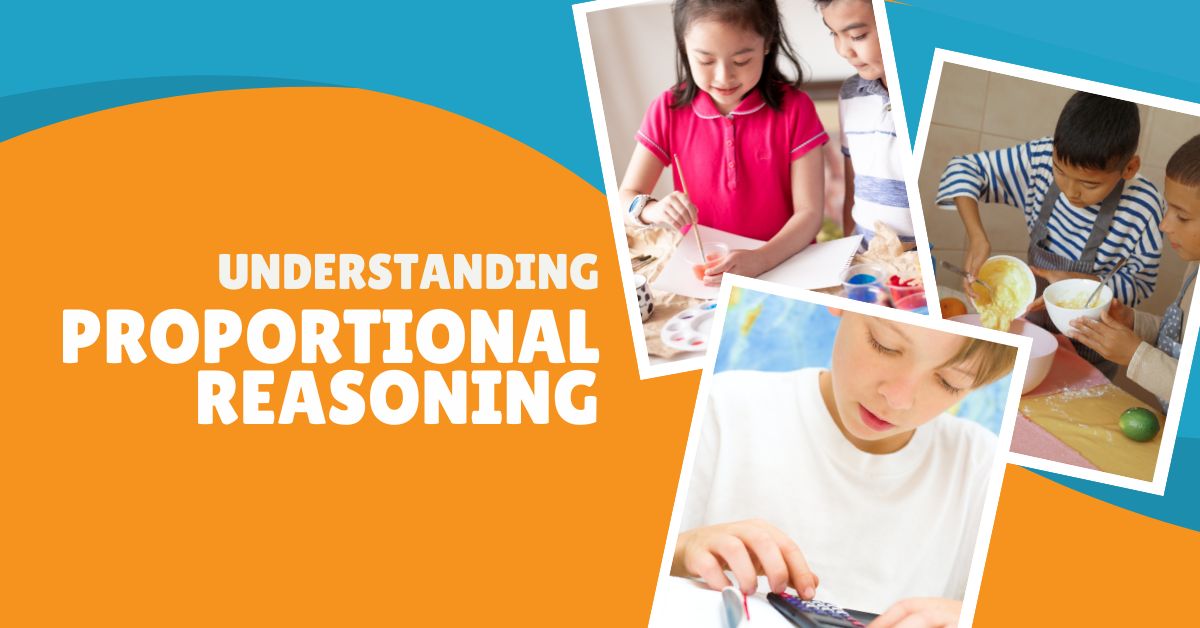Math can often feel abstract to children, making it challenging for them to connect concepts to their daily lives. Teaching math with real-world problems not only helps make the subject more relatable but also builds critical thinking and problem-solving skills they’ll use for a lifetime. By incorporating proportional reasoning and everyday examples of proportions, homeschooling parents can make math truly engaging and practical.
The Importance Of Real-World Math Applications
Math isn’t just for the classroom; it’s embedded in tasks we do every day. From measuring ingredients while baking to calculating discounts while shopping, real-world applications of math make it clear why these skills matter. When children see math as something they use in their daily routines, they’re more likely to be motivated and invested in learning.
Teaching math with real-world problems allows students to explore concepts hands-on. This approach not only improves their understanding but also helps them apply what they’ve learned in meaningful ways. By focusing on proportional reasoning and daily uses of proportions, you can help your child develop stronger problem-solving skills, and they’ll truly see the value of math.
What Is Proportional Reasoning?
Proportional reasoning involves understanding ratios and making comparisons. This can include identifying how two quantities relate to each other or predicting one quantity when another changes. It’s foundational for mastering fractions, percentages, scaling, and even higher-level math.
For example, suppose a recipe calls for 2 cups of flour to make 1 batch of muffins. If you want to make 3 batches, proportional reasoning helps you determine that you’ll need 6 cups of flour. This kind of reasoning is critical not just for cooking, but for tackling more complex problems related to engineering, science, and finances as well.
Everyday Proportional Reasoning Examples
To help your child get comfortable with proportional reasoning, incorporate these everyday scenarios:
Cooking and Baking
Kitchen math is one of the easiest and most natural ways to teach proportional reasoning. Try these activities:
- Doubling or tripling recipes: If a cookie recipe calls for 1.5 cups of sugar, ask your child how much sugar they would need if you doubled the recipe.
- Scaling down recipes: Turn it into a challenge by saying, “This makes enough for 10 and we only need enough for 5 people. How much of each ingredient should we use?”
- Comparing measurements: Discuss questions like, “If it takes 2 eggs to make a dozen cookies, how many do we need for 18 cookies?”
Grocery Shopping
Shopping trips can offer a multitude of opportunities for proportional reasoning:
- Unit pricing: Look at the cost per ounce of different sizes of peanut butter to determine the best value.
- Bulk purchases: If one pack of juice boxes has 8 boxes and costs $4, ask your child how much it would cost to buy enough for 32 boxes.
- Estimating discounts: If there’s a 25% off sale, ask your child to calculate the final price of an item.
Travel and Distance
Teach proportions by incorporating real-life travel examples:
- Maps and scales: Use a map with a scale (e.g., 1 inch = 10 miles) to calculate how far apart two destinations are.
- Speed and time: Discuss, “If it takes 2 hours to drive 120 miles, how long would it take to drive 60 miles?”
- Fuel efficiency: Show them how to calculate gas usage. For example, if your car drives 30 miles per gallon, how many gallons do you need for a 150-mile trip?

Teaching Proportions in Everyday Life
Life is filled with proportions that can help homeschooling parents teach math in engaging ways. Consider these scenarios to make math lessons feel more applicable:
- Weather reports: Discuss how temperatures are reported in different units (Celsius vs. Fahrenheit). Compare the two to see how equivalent measurements work.
- artwork or design: If your child enjoys creativity, proportions apply when scaling drawings or creating digital art. Try tasks like enlarging a design while keeping all dimensions proportional.
- Building projects: Simple woodworking or LEGO projects provide opportunities to measure dimensions and calculate scaled-down versions of real structures.
- Financial literacy: Introduce your child to basic budgeting concepts, such as saving portions of allowances. For example, teach them to save 20% of their earnings and calculate how much that is in different scenarios.
Practical Activities For Teaching Proportional Reasoning
To help you get started, here are some hands-on math activities to include in your homeschool routine:
Create Ratio Tables
Ratio tables help kids visualize relationships between quantities. Here’s how to try it:
- Use an example like comparing apples to oranges in a fruit salad. If a fruit salad has a 2-to-3 ratio of apples to oranges, ask your child to extend those ratios to a bigger batch (e.g., for 4 apples, 6 oranges; for 6 apples, 9 oranges, etc.).
- Ask questions like, “What patterns do you see? Can you predict how many oranges we’ll need for 10 apples?”
Mix Paint Colors
If your child loves art, teaching proportions through paint mixing is a fun option. For instance:
- Start with a mixture of 2 parts blue paint to 1 part yellow paint for green.
- Then challenge your child to calculate the ratios needed for larger batches, such as mixing enough paint to cover a poster board.
DIY Crafts with Measurements
Use proportions to guide crafts that require measuring. For instance:
- Sew a pillow of specific dimensions. If you double the size of the pillow, ask how much fabric will be needed.
- Build a birdhouse with a scaled-down blueprint. Have your child calculate measurements to enlarge the dimensions.
Sports Simulations
If your child is into sports, you can leverage this to teach proportional reasoning. For example:
- Create a scoring system for a game based on proportional contributions. For instance, if one point represents 10 yards in a race, what’s the proportional value of 15 yards?
- Use statistics from their favorite sport to discuss percentages. If a player scores on 3 out of every 10 shots, what’s their scoring rate?
Building a Math Routine with Real-World Contexts
Teaching math through real-world problems isn’t just about practicing proportions or solving equations. It’s an approach that makes math lessons more meaningful. To build this into your homeschool routine, keep the following in mind:
- Start small: Try incorporating one real-world problem a week into your lessons and increase as your confidence grows.
- Encourage discussions: Ask your child to explain their reasoning. Why does dividing a recipe in half mean halving all the ingredients? How does doubling a recipe impact the outcome?
- Celebrate errors: Mistakes are part of learning. If your child forgets to adjust one of the numbers proportionally, use it as an opportunity to talk about why consistency is important.
Real-world math problems also reinforce other essential skills, such as communication, creativity, and critical thinking. These lessons help your child learn to explain their reasoning, collaborate on solutions, and think outside of the box.
Why Proportions Are More Than Just Numbers
Proportions might seem like a small part of the math curriculum, but they hold immense carryover value to various aspects of life. By teaching kids how to compare, scale, and predict, you’re giving them the tools to tackle practical challenges—from doubling a recipe to building a doghouse to understanding how interest on a savings account works.
Because proportional reasoning is so integral to real life, it creates a seamless transition between abstract math and concrete experiences. This makes math less intimidating for kids and more aligned with their everyday reality.
By blending proportional reasoning with creative real-world applications, parents can make math feel accessible and enjoyable for their homeschoolers. Math is no longer just numbers on a page; it’s the building block of problem-solving in daily life.



